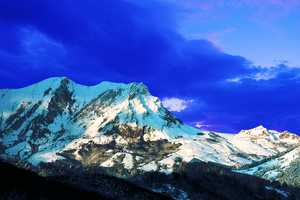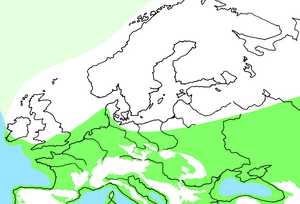gipuzkoakultura.net





The examples of palaeolithic art found in Gipuzkoa date from the end of the Upper Palaeolithic, from an era we call the Magdalenian, between 17,000 and 11,000 years ago.
The maximum period of Ice Age glaciation had already passed, about 18,000 years ago, during the Solutrean period, when the perpetual snowline in Gipuzkoa lay at around 1,100 metres, and the summits of Aizkorri and Aralar were white all year round.

The great glacial cap which covered all of Northern Europe and the large glaciers in the Alps and the Pyrenees and other high mountain ranges, retained the water stolen from the sea through condensation and precipitation, and the sea level dropped some 120 metres in our latitudes. If we examine the underwater or bathymetric contours of our coast, the 120 metre mark lies approximately 12 kilometres from the present coastline. The seashore therefore lay twelve kilometres farther out into the Bay of Biscay than it does today. The prehistoric sites which today we think of as coastal were actually quite some distance from the sea and it would have taken their inhabitants a walk of thirty kilometres or more, there and back, to reach the seashore.
As a result, no sea shells have been found among the settlements dating from that time. The great shell deposits appear after the Magdalenian. Until some time ago, prehistorians ascribed this fact to changing culinary fashions. Today we know that after the Magdalenian, the ice thawed, the water ran down to the sea and the sea level rose until it reached the present coastline. To put it in simple terms, the sea stayed a long way out during the Ice Age, and came closer again after it ended.
There are probably underwater sites amongst the now submerged limestone formations, but we cannot gain access to them. Perhaps in the future there will be new methods for studying them and if the authorities of the time are willing to provide support for that research, many aspects may be clarified.
The high point of the Ice Age had passed, but glaciation continued during the Magdalenian.
It is a magnificent period in our prehistory. As I have said, groups of humans had lived in this land for over two hundred millennia, but during this period there was a notable increase in the population, to judge from the number of settlements dating from this time, compared with those of previous eras.
The vegetation was different to that we enjoy today, or rather, to that our grandparents enjoyed a hundred years ago. At the beginning of the twentieth century, the lowlands and hills under 600 metres in altitude were covered in thick oak groves and chestnut woods. Above that level, beech trees dominated the landscape. This landscape has been unevenly preserved down to the present day. Of the great oak groves there remain only a few isolated survivors. The need for pastures and tillage land, the iron works, the shipyards and new buildings proved to be their downfall.
During the Magdalenian period this deciduous forest did not exist. The landscape was treeless. Mountains and hills were covered by cold steppe. Only in sunny spots in the sheltered valleys, small woods of wild pine grew, alongside some hazel and birch and some alders on the hillsides.
The animals of the region included not only deer, ibexes, chamois, urus, bison and horses, but also reindeer, Arctic hares and Nordic mice – animals which today inhabit the area between northern Germany and the Scandinavian tundra.
This was the landscape in which the artists of Ekain, Altxerri, Torre, Ermittia, Urtiaga, Aitzbitarte and other caves in Gipuzkoa lived.